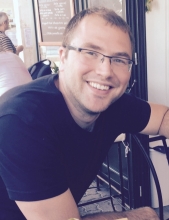CBE & MSE Seminar: Making and Manipulating “Pathologically Coherent” Molecular Excitons in Self-assembled Aggregates

Department of Chemistry and Biochemistry
University of California, Los Angeles
Abstract: Dye molecular aggregates are non-covalently linked molecules that have strong coupling among their constituent transition dipole moments. This strong coupling leads to the formation of extended excitons, which in turn, allows for long-range exciton migration, large color-shifts and coherent superradiance. In short, aggregate molecular packing provides a new handle to tune photophysics in often unexpected ways. I will show how self-assembled cyanine dyes form complex molecular aggregate structures, including planar and nanotubular topologies with excitons that delocalize over 10s to 100s of monomer units. These structures can show superradiant emission and extremely long-range (>1 micron) exciton diffusion in solution. I will show how we can control extended excitons through modulation of molecular disorder. Finally, I will demonstrate how thermodynamic and chemical control of molecular aggregation can be used to make cyanine dye aggregates that are extremely redshifted, with strong absorption above 1000nm. Overall, we demonstrate that molecular aggregates can bridge molecular and extended solid excitonic properties, with exciting applications for photoactive materials.
Bio: Justin Caram is an assistant professor in the Department of Chemistry and Biochemistry at UCLA, where he started in July 2017. Previously, he was the Bob Silbey Memorial Postdoctoral Fellow at the Harvard-MIT Center for Excitonics, and Energy Frontier Research Center funded by the DOE. Caram earned his Ph.D. in chemistry at the University of Chicago, where he studied ultrafast energy transfer in photosynthesis. His current research group develops new materials and methods to study excitons in nanostructures, with a focus on new materials that absorb and emit in the shortwave infrared.
Host: Regina Ragan
Share
Upcoming Events
-
MAE 298 SEMINAR: Biomechanics of Rotator Cuff
-
CBE 298 Seminar: Micro- and Nanofluidic Systems for Molecular Biosensing, Nanotoxicity, and Optogenetics
-
MSE Special Seminar: Architecting 3D Complex Materials for Sustainability
-
MSE Special Seminar: Decarbonizing Industries for a Climate-resilient Future - From Renewable Energy to Sustainable Material Recovery
-
CEE Seminar: BIM and the Digital Twin
